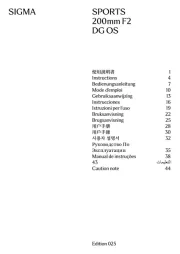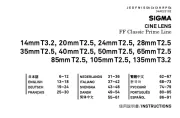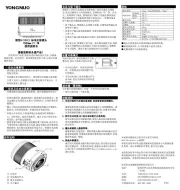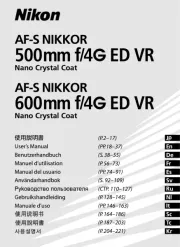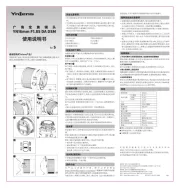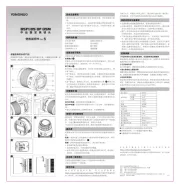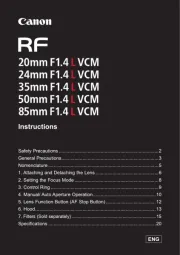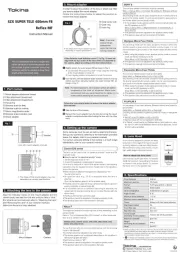
ƜƷƨƼƸŴǷǰȞȬȳǺǛƓᝰƍ൭NJƍƨƩƖƋǓƕƱƏƝƟƍLJƢŵஜᛟଢ
ǛƝችᛠƷɥŴȬȳǺƷೞᏡŴદ˺ŴӕǓৢƍɥƷදໜǛദƠƘྸᚐƠƯŴ
ϙჇજࢨǛƓಏƠLjƘƩƞƍŵƳƓஜᛟଢƸŴӲǫȡȩဇσဇƱƳƬƯƓǓLJ
ƢƷưŴႸƴǑǓƝဇǫȡȩƷᛆ࢘ሖǛƓᛠLjƴƳǓŴƝဇǫȡȩƷᛟ
ଢNjƋǘƤƯƝᚁƘƩƞƍŵƓᛠLjƴƳƬƨƋƱƸŴٻЏƴሥƠƯƘƩƞƍŵ
ӕǓৢƍǛᛚǔƱŴဇᎍƕͻǛƏӧᏡࣱƕƋǓLJƢŵ
ŠȬȳǺǛ˄ƚƨǫȡȩưٽᨗǍࢍƍήเǛᙸǔƱŴᙻщᨦܹǛឪƜƢ
ǕƕƋǓLJƢŵཎƴȬȳǺҥ˳ưٽᨗǛႺᙸǔƱŴڂଢƷҾ׆Ʊ
ƳǓLJƢŵ
ӕǓৢƍǛᛚǔƱ
Ŵ
ဇᎍƕᨦܹǛƏƔ
Ŵ
ཋႎܹƕႆဃƢǔӧᏡࣱƕƋǓLJƢŵ
ŠȬȳǺŴLJƨƸȬȳǺǛ˄ƚƨǫȡȩǛȬȳǺǭȣȃȗǛ˄ƚƳƍLJ
LJ્ፗƠƳƍưƘƩƞƍŵٽᨗƷήƕᨼήྵᝋǛឪƜƠŴ້໎ƷҾ׆
ƱƳǔئӳƕƋǓLJƢŵ
ŠȞǦȳȈᢿƸᙐᩃƳ࢟ཞǛƠƯƓǓLJƢƷưŴᒰƴৢƏƱࣴƷҾ
׆ƱƳǓLJƢŵ
ŠɤᏩƸҗЎƴࢍࡇƷƋǔNjƷǛƝဇƘƩƞƍŵࢊƍNjƷǛƝဇƴ
ƳǓLJƢƱŴ᠃ƢǔǕƕƋǓLJƢŵ
ӲᢿỉӸᆅί ὸ1
ձȕǣȫǿȸƶơ
ղᙀяႎុᩉႸႮ
ճዴ
մǺȸȠȪȳǰ
յȕǩȸǫǹȪȳǰ
նOS ǹǤȃȁ
ᲢǽȋȸဇǛᨊƘᲣ
շ
ȕǩȸǫǹȢȸȉЏƑǹǤȃȁ
ոȞǦȳȈ
չȬȳǺȕȸȉ
ἝἅὅဇỆếẟề
ƜƷȬȳǺƸŴȋdzȳᙌ ȬȳǺƴƓƚǔŴ ǿǤȗᲢǓȪȳǰƷƳƍǿǤAF G
ȗᲣƱӷሁƷˁಮƴƳƬƯƍLJƢŵǫȡȩƱƷኵӳǘƤƴǑƬƯŴೞᏡƴСᨂƕ
ưǔئӳƕƋǓLJƢŵᛇƠƘƸƝဇƷǫȡȩƷᛟଢሁǛƝӋༀƘƩƞƍŵ
ἾὅἌỉბᏮ૾ඥ
ǫȡȩǁƷბᏮ૾ඥƸŴƓƪƷǫȡȩƷᛟଢƴࢼƬƯƘƩƞƍŵ
ȞǦȳȈ᩿ƴƸǓᡲѣဇŴAF ᡲѣဇƷᘺፗǍŴᩓൢໜሁƕƋǓLJƢŵǭǺ
Ǎ൲ǕƕƭƘƱᛚ˺ѣǍᨦƷҾ׆ƱƳǓLJƢƷưƝදƘƩƞƍŵ
ắදᴾ ίἏἝὊဇửᨊẪὸ
ƜƷȬȳǺƸŴOS ǹǤȃȁƷ ON/OFF ƴ᧙ǒƣŴǫȡȩƔǒƷᩓเዅƴǑǓŴ
ǕᙀദȬȳǺȦȋȃȈƕܭƷˮፗƴܭƞǕજࢨưƖǔཞƱƳǓLJƢ
ᲢજࢨǹǿȳȐǤཞᲣŵજࢨǹǿȳȐǤཞƸŴǫȡȩƷᩓเǛλǕƯƔǒᲢNj
ƠƘƸҞƠƠƨǷȣȃǿȸȜǿȳƔǒǛᩉƠƯƔǒᲣኖ 1Ў᧓ዒዓƠLJƢŵ
ǫȡȩƷᩓเǛλǕǔŴNjƠƘƸЏǔᨥƴŴȕǡǤȳȀȸƕٻƖƘѣƖLJƢ
ƕီࠝưƸƋǓLJƤǜŵ
ǫȡȩǛɤᏩሁƴܭƠƯજࢨƢǔئӳŴǫȡȩƔǒƷᩓเዅƷஊƴǑǓ
ನƕٻƖƘ٭҄ƠLJƢƷưŴ࣏ƣજࢨǹǿȳȐǤཞƴƠƯನǛൿNJƯƘ
Ʃƞƍŵኖ Ў᧓ኺᢅƠŴજࢨǹǿȳȐǤཞƕᚐᨊƞǕƨئӳƸŴǷȣȃǿ1
ȸȜǿȳǛҞƠƠƯƘƩƞƍŵ
ȬȳǺǛٳƠƨŴNjƠƘƸǫȡȩƷᩓเǛЏƬƨŴȬȳǺǛǔƱǫǿǫ
ǿƱ᪦ƕƢǔئӳƕƋǓLJƢƕᨦưƸƋǓLJƤǜŵ
ἦὅἚӳỪẶểἌὊἱὅἂ
ǪȸȈȕǩȸǫǹưજࢨƢǔئӳƸŴȕǩȸǫǹȢȸȉЏǓƑǹǤȃȁǛ AF
ƴǻȃȈƠLJƢᲢ ᲣŵȞȋȥǢȫưજࢨƢǔئӳƸŴȕǩȸǫǹȢȸȉЏƑ2
ǹǤȃȁǛ ƴǻȃȈƠŴȕǩȸǫǹȪȳǰǛׅƠƯȔȳȈǛӳǘƤLJƢŵMF
ǫȡȩƷȕǩȸǫǹȢȸȉƷЏǓƑƸŴƝဇƷǫȡȩƷᛟଢƴࢼƬƯƘ
Ʃƞƍŵ
ȋdzȳŴǽȋȸဇƸŴឬ᪦ඬȢȸǿȸƴࣖ
ݣƠƨǫȡȩƱƷኵӳƤưǪȸȈȕ
ǩȸǫǹજࢨƕӧᏡưƢŵឬ᪦ඬȢȸǿȸƴࣖ
ݣƠƯƍƳƍǫȡȩƱƷኵӳƤ
ưƸŴȞȋȥǢȫȕǩȸǫǹưƷƝဇƱƳǓLJƢŵ
ƜƷȬȳǺƸ ƴǻȃȈƠƨLJLJŴȞȋȥǢȫưƷȔȳȈᙀദǛƢǔƜƱƕAF
ӧᏡưƢŵǫȡȩǛǷȳǰȫ ȢȸȉƴǻȃȈƠƯŴӳࢸŴǷȣȃǿȸȜAF
ǿȳǛҞƠƠƨLJLJŴȕǩȸǫǹȪȳǰǛׅƠƯȔȳȈǛᛦૢƠƯƘƩƞƍŵ
ȞȋȥǢȫưȔȳȈǛӳǘƤǔᨥŴႸႮƕ ᲢᨂᢒᲣƷˮፗưNjᢒƴȔȳĐ
ȈƕӳǘƳƍƜƱƕƋǓLJƢƷưŴȕǡǤȳȀȸưᄩᛐƠƳƕǒȔȳȈǛӳǘ
ƤƯƘƩƞƍŵ
ż ŽἌὊἱὅἂ
ǺȸȠȪȳǰǛׅƠƯŴஇᢘƳನƴƳǔǑƏƴໜុᩉǛ٭҄ƞƤLJƢŵ
ốủᙀദೞᏡỆếẟềᴾ ίἏἝὊဇửᨊẪὸ
ƜƷȬȳǺƸŴƪજࢨƷȖȬǛ᠉ถƢǔŴƿǕᙀദೞᏡ OS(Optical
Stabilizer)Ǜ ƠƯƍLJƢŵᲢǽȋȸဇƸƿǕᙀദೞᏡǛ ƠƯƍLJƤǜŵ
ǫȡȩƷƿǕᙀദೞನǛƝဇƘƩƞƍŵᲣ
OS ONᲢƿǕᙀദೞᏡᲣǹǤȃȁǛ ƴƠLJƢŵᲢ ᲣǷȣȃǿȸȜǿȳǛҞ3
ƠƠŴȕǡǤȳȀȸưƕܤܭƠƯƍǔƷǛᄩᛐƠƯƔǒજࢨƠƯƘƩƞƍŵ
ᲢҞƠƠƯƔǒƕܤܭƢǔLJưŴኖᲫᅺƔƔǓLJƢŵᲣ
ˌɦƷவˑưƸŴƿǕᙀദೞᏡƸဇƠƳƍưƘƩƞƍŵ
ƒ ƒ ɤᏩሁưǫȡȩǛܭƠƯƷજࢨ ȐȫȖᲢᧈ᧓ᩧήᲣજࢨ
જࢨႺࢸǍǫȡȩƷϋᔺȕȩȃǷȥƷΪᩓƳƲƴŴȕǡǤȳȀȸƕǕǔ
ƜƱƕƋǓLJƢƕŴજࢨƴƸࢨ᪪ƋǓLJƤǜŵ
ǭȤȎȳဇƸ ˌٳƷȕǣȫȠǫȡȩƴƓƍƯŴƿǕᙀദೞᏡƕദࠝEOS-1V
ƴƖLJƤǜŵ ǹǤȃȁǛ ƴƠƯဇƠƯƘƩƞƍŵOS OFF
ἧἻἕἉἷજࢨ
ǫȡȩƷϋᔺȕȩȃǷȥƸဇƠƳƍưƘƩƞƍŵȬȳǺᦟለưȕȩȃǷȥήƕ
ƞƑƗǒǕŴဒ᩿ɦᢿƴȬȳǺᦟለƷࢨƕϙǓƜLjLJƢŵ࣏ƣٳᢿȕȩȃǷȥǛ
ဇƠƯƘƩƞƍŵ
ἾὅἌἧὊἛ
ȬȳǺȕȸȉƸŴဒឋƴࢨ᪪ǛɨƑǔஊܹήዴƷǫȃȈƴஊјưƢŵȬȳǺέ
ᇢƴȬȳǺȕȸȉǛƸNJᡂLjŴᚘ૾ӼƴഥLJǔLJưׅƠƯᄩܱƴӕǓ˄ƚƯƘ
ƩƞƍŵᲢ Უ4
ઃ࠘ƴƸŴȬȳǺȕȸȉǛᡞƞƴƸNJᡂLjŴᚘ૾ӼƴׅƠƯӕǓ˄ƚƕư
ƖLJƢᲢ 5Უŵ
ሥẆӕৢɥỉද
ൢƸǫȓǍᥢƷҾ׆ƱƳǓLJƢŵᧈ᧓ဇƠƳƍئӳƸŴʑ༞дƱɟደƴ
ࣱ݅Ʒᑣƍܾ֥ƴλǕƯሥƠƯƘƩƞƍŵȊȕǿȪȳሁŴ᧸ᖓдƷƋǔئ
ƴƸሥƠƳƍưƘƩƞƍŵ
ȬȳǺ᩿ƴƸႺưᚑǕƳƍưƘƩƞƍŵǴȟǍ൲Ǖƕ˄ƍƨƱƖƴƸŴȖ
ȭǢȸƔȬȳǺȖȩǷưӕǓᨊƍƯƘƩƞƍŵƷួƳƲƸŴࠊᝤƷȬȳǺǯ
ȪȸȊȸ෩ƱȬȳǺǯȪȸȋȳǰȚȸȑȸư᠉ƘƍƯƘƩƞƍŵșȳǸȳŴ
ǷȳȊȸሁƷஊೞ๋дƸዌݣƴǘƳƍưƘƩƞƍŵ
ƜƷȬȳǺƸ᧸൦ನᡯưƸƋǓLJƤǜŵᩋټǍ൦ᡀưƷဇưƸŴǒƞƳƍ
ǑƏƴදƠƯƘƩƞƍŵ൦ƕȬȳǺϋᢿƴλǓᡂljƱŴٻƖƳᨦƷҾ׆Ʊ
ƳǓŴྸɧᏡƴƳǔئӳƕƋǓLJƢŵ
࣯ນƳภࡇ٭҄ƴǑǓŴȬȳǺϋᢿƴ൦ƕဃơǔƜƱƕƋǓLJƢŵ݊ƍދٳ
Ɣǒଡ଼ƔƍܴϋƴλǔƱƖƳƲƸŴDZȸǹǍȓȋȸȫᘥƴλǕŴԗƷภࡇƴ
ƳơLJƤƯƔǒƝဇƘƩƞƍŵ
ԼឋᚰểỴἧἑὊἇὊἥἋỆếẟề
ԼឋᚰƱǢȕǿȸǵȸȓǹƴ᧙ƠƯƸŴКኡƷżᚰᙹܭŽǛƝӋༀƘƩƞƍŵ
ɼễˁಮ
ȬȳǺನᲢ፭ Უ இٻજࢨྙ- 14 - 19
ဒ ᚌ 84.1 - 23.3° ȕǣȫǿȸǵǤǺ 82mm
இݱǓ 22 இٻࢲ μᧈX 88.6 x 109.4mm
இჺજࢨុᩉ 0.45m
ٻƖƞƞƸŴǷǰȞȞǦȳȈƷNjƷưƢŵ
ƜƷȬȳǺƸŴᤲǍƻእǛԃLJƳƍ ؾݣሊǬȩǹǛဇƠƯƍLJƢŵ
᪥ᮏㄒ㻌
ԓ
ද
Thank you very much for purchasing a Sigma Lens. In order to get the
maximum performance and enjoyment out of your Sigma lens, please
read this instruction booklet thoroughly before you start to use the lens.
WARNING!! : SAFETY PRECAUTIONS
ŦDo not look directly at the sun, through the lens. Doing so can cause
damage to the eye or loss of eyesight.
ŦDo not leave the lens in direct sunlight without the lens cap attached,
whether the lens is attached to the camera or not. This will prevent the
lens from concentrating the sun’s rays, which may cause a fire.
ŦThe shape of the mount is very complex. Please be careful when
handling it so as not to cause injury.
DESCRIPTION OF THE PARTS (fig.1)
ձFilter Attachment Thread
ղDistance Scale
ճFocus Index Line
մZoom Ring
յFocus Ring
նOS Switch
(Except Sony)
շFocus Mode Switch
ոMount
չLens Hood
FOR NIKON MOUNT
This lens functions in the same way as a G Type auto-focus Nikon lens
(without an aperture ring). Functions may be restricted depending on the
lens/camera combination. For more details, please refer to the camera’s
instruction manual.
ATTACHING TO THE CAMERA BODY
When this lens is attached to the camera body it will automatically
function in the same way as your normal lens. Please refer to the
instruction booklet for your camera body.
Ŧ
On
the
lens
mount
surface,
there
are
a
number
of
couplers
and
electrical
contacts. Please keep them clean to ensure proper connection. To avoid
damaging the lens, be especially sure to place the lens with its front
end down while changing the lens.
NOTICE (Except Sony)
This lens is powered from the camera. The stabilizer unit will be placed to
a specific position in the lens body and then shooting will be possible
(stabilizer unit will switch to active status) regardless of the OS Switch
position. The active status will take approximately a minute from turning
the camera on or depressing the shutter button “half-way”.
ŦThe image in the viewfinder looks like it is vibrating after the camera is
turned on or turned off. This is not a malfunction.
ŦIf you fix the camera with the tripod or another method, please
determine the composition when the stabilize unit is in the active
status. The composition seen through the viewfinder will be different
depending on the power status of the camera. If the active status is
cancelled, please press the shutter button “half-way”.
ŦIf the lens is detached from camera or the camera power is turned off,
the lens may emit a chattering noise, but this is not a malfunction.
FOCUSING AND ZOOMING
For autofocus operation, set the focus mode switch on the lens to the
“AF” position (fig.2). If you wish to focus manually, set the focus mode
switch on the lens to the “ ” position. You can adjust the focus by MF
turning the focus ring.
ŦPlease refer to camera’s instruction manual for details on changing the
camera’s focusing mode.
ŦFor Nikon and Sony mounts, it is only possible to use AF with camera
bodies
which
support
motors
driven
by
ultrasonic
waves
such
as
HSM.
AF
will
not
function
if
the
camera
body
does
not
support
this
type
of
motor.
ŦThis
lens
also
permits
manual
focusing
even
in
the
autofocus
mode.
With
the
camera
set
to
the
One
-
Shot
AF
(AF
-
S)
mode,
it
is
possible
to
manually
override
the
autofocus
while
the
shutter
release
button
is
pressed
halfway.
ŦWhen operating this lens in manual focus mode, it is recommended
that correct focus be confirmed visually in the viewfinder rather than
relying on the distance scale.
ż ŽZOOMING
Rotate the Rubber grip on the zoom ring to the desired position.
ABOUT OS (OPTICAL STABILIZER) FEATURES (Except Sony)
This
OS
lens
effectively
compensates
for
image
blurring
caused
by
camera
shake. Set the (fig.3). Press the shutter button halfway OS switch to ON
down, confirm the image in the viewfinder is stable then take the picture.
(It takes approximately 1 second to produce a stable image from the time
of depressing the shutter button halfway).
ŦDo not use the Optical Stabilizer in the following situations:
ƒWhen the lens is mounted on a tripod.
ƒWhen using the camera in Bulb mode.
ŦAlthough the viewfinder image may appear to shake immediately after
shooting and/or at the start of the flash charge cycle of the camera’s
built-in flash, it will not cause any effect to the pictures.
ŦFor Nikon and Canon mounts, the Optical Stabilizer (OS) function will
not work with film SLR cameras except Nikon F6 and Canon EOS-1V.
FLASH PHOTOGRAPHY
The camera’s built-in flash will cause barrel shadow if used with this lens.
For best results, please only use an external flash unit.
LENS HOOD
A bayonet type detachable hood is provided with the lens. This lens hood
helps to prevent flare and ghosted images caused by bright illumination
from outside the picture area. Attach the hood and turn clockwise until it
stops rotation. (fig.4)
ŦIn order to place the lens and hood into the storage case, you must first
remove
the
hood,
then
replace
it
on
the
lens
in
the
reverse
position
(fig.5)
.
BASIC CARE AND STORAGE
ŦAvoid any shocks or exposure to extreme high or low temperatures or to
humidity.
ŦFor extended storage, choose a cool and dry place, preferably with good
ventilation. To avoid damage to the lens coating, keep away from
mothballs or naphthalene gas.
ŦDo not use thinner, benzine or other organic cleaning agents to remove
dirt or finger prints from the lens elements. Clean by using a soft,
moistened lens cloth or lens tissue.
ŦThis
lens
is
not
waterproof.
When
you
use
the
lens
in
the
rain
or
near
water,
keep it from getting wet. It is often impractical to repair the internal
mechanism, lens elements and electric components damaged by water.
ŦSudden temperature changes may cause condensation or fog to appear
on the surface of the lens. When entering a warm room from the cold
outdoors, it is advisable to keep the lens in the case until the temperature
of the lens approaches room temperature.
TECHNICAL SPECIFICATIONS
Lens construction 14 - 19 Filter Size 82mm
Angle of View 84.1 - 23.3° Dimensions
Dia.
×
Length
88.6
x
109.4
mm
(3.49 x 4.31 in)
Minimum Aperture 22
Minimum
Focusing
Distance
0.45m (1.48ft)
Weight 885g
(31.2 oz)
Magnification 1:4.6
ŦDimensions and weight include the SIGMA mount.
ŦThe glass materials used in the lens do not contain environmentally
hazardous lead and arsenic.
ENGLISH
Wir danken Ihnen für das Vertrauen, das Sie uns mit dem Kauf dieses
SIGMA Produktes erwiesen haben. Bitte lesen Sie sich diese Anleitung
vor der ersten Benutzung des Gerätes aufmerksam durch.
ACHTUNG!!: VORSICHTSMAßNAHMEN
Ŧ
Schauen
Sie
nie
direkt
durch
das
Objektiv
in
die
Sonne,
da
dies
zu
Verletzungen
am Auge oder gar zum Verlust des Sehvermögens führen kann.
ŦUnabhängig davon, ob das Objektiv an der Kamera angebracht ist oder
nicht, setzen Sie es bitte keinesfalls ohne Frontdeckel der direkten
Sonneneinstrahlung aus. Dies gilt, um einen Brand zu vermeiden, der durch
das
Objektiv
einfallende
und
gebündelte
Strahlen
ausgelöst
werden
könnte.
ŦDer Objektivanschluss ist sehr komplex. Bitte seien Sie vorsichtig im
Umgang, um Beschädigungen vorzubeugen.
BESCHREIBURUNG DER TEILE (Abb.1)
ձFiltergewinde
ղEntfernungsskala
ճEinstellindex
մBrennweitenring
յEntfernungsring
նOS Schalter (Ausser Sony)
շFokussierschalter
ոAnschluß
չGegenlichtblende
NIKON ANSCHLUSS
Dieses Objektiv funktioniert genau so wie ein Nikon AF-Objektiv des „G
Typs“
(Typ
ohne
Blendenring). Abhängig
von
der
jeweiligen
Kombination
mit
einer
Kamera
können
einige
Funktionseinschränkungen
auftreten.
Weitere
Informationen hierüber schlagen Sie bitte in der Bedienungsanleitung
der verwendeten Kamera nach.
ANSETZEN AN DAS KAMERAGEHÄUSE
An
die
Kamera
angesetzt,
funktioniert
das
Objektiv
genauso
automatisch
wie
lhr Normalobjektiv. Einzelheiten hierüber finden Sie in der Bedienungsanleitung
zur Kamera.
Ŧ
Halten
Sie
die
Kontakte
und
Kupplungselemente
am
Objektivanschluß
stets
sauber. Stellen Sie das Ovjektiv grundsätzlich nur mit der Vorderseite nach
unten ab, um eine Beschädingung der Kupplungs-elemente zu vermeiden.
HINWEIS (Ausser Sony)
Dieses Objektiv wird durch die Kamera angetrieben. Die Stabilisierungseinheit
wird in eine spezifische Position im Objektiv gebracht und Aufnahmen
werden möglich, (der Stabilisator wird aktiviert) unabhängig von der OS
Schalter
Position.
Der
Aktivstatus
dauert
ca.
eine
Minute
vom
Einschalten
der Kamera oder vom “Halb-Drücken” des Auslösers an.
ŦDas Sucherbild scheint zu vibrieren, wenn Sie die Kamera ein oder
ausschalten. Das ist keine Fehlfunktion.
Ŧ
Wenn Sie die Kamera an einem Stativ oder anders befestigen, bestimmen
bitte Sie Ihren Bildaufbau, wenn der Stabilisator aktiv ist. Der
Bildaufbau durch den Sucher sieht abhängig vom Stabilisator-Status
unterschiedlich aus. Ist der Stabilisator nicht aktiv, drücken Sie den
Auslöser der Kamera ”halb-durch”, um ihn zu aktivieren.
ŦWenn das Objektiv von der Kamera abgenommen oder die Kamera
ausgeschaltet wird, kann das Objektiv ein klapperndes Geräusch
verursachen, was jedoch keine Fehlfunktion darstellt.
EINSTELLUNG VON SCHÄRFE UND BRENNWEITE
Für
die
automatische
Scharfeinstellung
schalten
Sie
den
Fokussierschalter
am
Objektiv
auf
die
“AF”-Position
(Abb.2).
Sollten
Sie
die
Schärfe
manuell
einstellen wollen, schalten Sie den Fokussierschalter am Objektiv auf die
“
MF
”-Position.
Sie
können
die
Schärfe
nun
durch
Drehen
des
Entfernungsrings
einstellen.
ŦHinweise
zum
Wechsel
der
Fokussierbetriebsart
der
Kamera
entnehmen
Sie bitte der Bedienungsanleitung der Kamera.
ŦBei Nikon und Sony Anschlüssen, kann der Autofokus nur mit Kameras
benutzt werden, die Ultraschallmotoren, wie die HSM, unterstützen.
Der Autofokus wird nicht funktionieren, wenn die Kamera diese Art von
Motoren nicht unterstützt.
ŦDieses Objektiv kann auch manuell scharfgestellt werden, während die
AF-Betriebsart eingestellt ist. Wenn die Kamera auf Einzelbild-AF
eingestellt ist, können Sie, nachdem das Objektiv von der Automatik
scharfgestellt wurde und zum Stillstand gekommen ist, die Schärfe
durch Drehen am Fokussierring manuell einstellen. Der Auslöser muß
hierbei halb durchgedrückt bleiben.
ŦBei manueller Fokussierung sollte die Schärfe auf der Mattscheibe
eingestellt werden.
żBRENNWEITENEINSTELLUNGŽ
Durch Drehen des Zoomringes wird die Brennweite eingestellt.
ÜBER DIE OS (OPTICAL STABILIZER) FUNKTION (Ausser Sony)
Dieses
OS
(Optical
Stabilizer)
Objektiv
kompensiert
erfolgreich
die
Unschärfe
in
Ihren
Bildern,
die
durch
Verwacklung
der
Kamera
während
der
Aufnahme
entsteht. Stellen Sie den OS Schalter auf ON (Abb.3). Drücken Sie den
Auslöser halb durch, vergewissern Sie sich, daß das Bild im Sucher stabil
steht und drücken den Auslöser zur Anfertigung der Aufnahme ganz
durch. (Es dauert ca. 1 Sekunde, um nach dem Andrücken des Auslösers
ein stabiles Bild zu erzeugen).
Ŧ
Bitte
benutzen
Sie
den
Optical
Stabilizer
nicht
in
den
folgenden
Situationen:
Ɣ wenn das Objektiv auf einem Stativ montiert ist
Ɣ bei Langzeitbelichtungen (Bulb)
ŦObwohl das Sucherbild direkt nach der Aufnahme und zu Beginn des
Aufladens des eingebauten Blitzgerätes wackeln könnte, hat dies
keinen Einfluss auf Ihre Bilder.
ŦIm
Nikon
und
Canon
System
funktioniert
der
Optical
Stabilizer
(OS)
nicht
beim
Einsatz
an
anderen
Film
SLR
Kameras
als
Nikon
F6
und
Canon
EOS-1V.
BLITZ FOTOGRAFIE
Interner Blitz der Kamera wird einen runden Schatten verursachen.
Verwenden Sie nicht den internen Kamerablitz mit diesem Objektiv, bitte
nur externes Blitzgerät verwenden.
GEGENLICHTBLENDE
Das Objektiv wird mit einer abnehmbaren Bajonett-Gegenlichtblende
geliefert. Diese hilft, Streulicht und Reflexe zu vermeiden, wie sie durch
starkes, seitlich einfallendes Licht entstehen können. Orientieren Sie sich
beim Anbringen der Gegenlichtblende an den aufgedruckten Markierungen
und achten Sie darauf, daß die Blende korrekt einrastet. (Abb.4)
Ŧ
Zum Transport oder zur Aufbewahrung des Objektives kann die Gegenlicht-
blende abgenommen und umgestülpt aufgesetzt werden. (Abb.5)
PFLEGE UND AUFBEWAHRUNG
ŦSetzen Sie das Objektiv nicht harten Stößen, extrem hohen bzw.
niedrigen Temperaturen oder hoher Luftfeuchtigkeit aus.
Ŧ
Wählen Sie für längere Lagerung einen kühlen, trockenen und möglichst
gut belüfteten Ort. Vermeiden Sie die Lagerung in der Nähe von
Chemikalien, deren Dämpfe die Vergütung angreifen könnten.
ŦVerwenden Sie zur Entfernung von Schmutz oder Fingerabdrücken auf
Glasflächen keinesfalls Verdünner, Benzin oder andere organische
Reinigungsmittel, sondern ein sauberes, feuchtes Optik-Reinigungstuch
oder Optik-Reinigungspapier.
Ŧ
Das
Objektiv
ist
nicht
wassergeschützt.
Sorgen
Sie
deshalb
bei
Aufnahmen
im Regen oder in der Nähe von Wasser für ausreichenden Schutz. Die
Reparatur
eines
Objektives
mit
Wasserschaden
ist
häufig
nicht
möglich!
ŦTemperaturschocks können zum Beschlagen des Objektives und seiner
Glasflächen führen. Beim Wechsel aus der Kälte in ein geheiztes
Zimmer empfiehlt es sich, das Objektiv solange im Köcher oder der
Fototasche
zu
belassen,
bis
es
die
Zimmertemperatur
angenommen
hat.
TECHNISCHE DATEN
Glieder - Linsen 14 - 19
Größter Abbildungsmaßstab
1:4.6
Diagonaler Bildwinkel 84.1
-
23.3°
Kleinste Blende 22 Abmessungen Ø ×
Baulän
e
88.6 x
109.4mm
Naheinstellgrenze 0.45m Gewicht 885g
ŦAbmessungen und Gewicht beziehen sich auf den SIGMA-Anschluß.
Ŧ
Das
Glas,
das
für
das
Objektiv
verwendet
wird,
enthält
kein
umweltschädliches
Blei und Arsen.
DEUTSCH
Wij stellen het op prijs dat u een Sigma objectief heeft aangeschaft.
Teneinde maximaal profijt en plezier van uw Sigma objectief te hebben,
adviseren wij u deze gebruiksaanwijzing geheel door te lezen alvorens u
het objectief gaat gebruiken.
WAARSCHUWING!! : VEILIGHEIDS VOORZORGSMAATREGELEN
ŦKijk niet door het objectief direct in de zon. Dit kan oogbeschadiging
veroorzaken of gezichtsverlies.
ŦLaat het objectief nooit zonder lensdop achter in de zon, of het nu wel
of
niet
is
bevestigd
op
de
camera.
Hierdoor
voorkomt
u
dat
zonnestralen
zich
in
het
objectief
kunnen
bundelen
waardoor
brand
zou
kunnen
ontstaan.
ŦDe vorm van de lensvatting is zeer complex. Wij adviseren u voorzichtig
te zijn om verwondingen en beschadigingen te voorkomen.
BESCHRIJVINS VAN DE ONDERDELEN (fig.1)
ձFilterschroefdraad
ղAfstandschaal
ճIndex teken
մZoomring
յScherpstelring
նOS Schakelaar
(Niet voor Sony)
շ
Scherpstelkeuze
schakelaar
ոVatting
չZonnekap
VOOR NIKON VATTING
Dit objectief werkt op identieke wijze als de objectieven van het G type
(zonder diafragmaring) voor Nikon AF. Afhankelijk van het gebruikte
cameratype kunnen er enkele beperkingen zijn. Raadpleeg hiervoor de
gebruiksaanwijzing van uw camera.
BEVESTIGING OP DE CAMERABODY
Wanneer uw Sigma objectief op de camerabody is bevestigd, zal het
automatisch net zo functioneren als de originele opjectieven. Lees hiervoor
de gebruiksaanwijzing van uw camera.
Ŧ
Op
de
vatting
bevindt
zich
een
aantal
electrische
contacten
en
koppelstukken.
Deze moeten goed schoon worden gehouden teneinde van een goed
contact verzekerd te zijn. Plaats, bij het verwisselen van objectieven
deze altijd met de voorzijde en niet met de vatting op tafel. Dit ter
voorkoming van beschadiging.
LET OP! (Niet voor Sony)
Dit objectief wordt vanuit de camera aangestuurd. Nadat de camera is
ingeschakeld of nadat de ontspanknop half is ingedrukt is de stabilisatie
functie in werking.
ŦHet beeld in de zoeker lijkt even te bewegen als de camera wordt in- of
uitgeschakeld. Dit is een normaal verschijnsel en heeft te maken met
het activeren van de OS functie.
ŦIndien u de camera in een stabiele positie brengt of monteert op een
statief kan alleen een juiste compositie gemaakt worden als de camera
aan staat of de ontspanknop half is ingedrukt.
ŦWanneer het objectief van de camera wordt verwijderd, of wanneer de
camera wordt uitgezet kan het objectief een geluid produceren. Dit is
een normaal verschijnsel en geen storing.
SCHERPSTELLEN EN ZOOMEN
Om de autofocus functie te activeren dient u het schuifje op het objectief
op de AF postitie te zetten (fig.2). Wilt u handmatig scherpstellen zet dan
het
schuifje
op
het
objectief
op
de
MF
positie.
Vervolgens
kunt
u
scherpstellen
door aan de focusring te draaien.
Ŧ
Raadpleeg
a.u.b.
de
gebruiksaanwijzing
van
uw
camera
om
bovengenoemde
instellingen op uw camera te wijzigen.
ŦVoor Nikon en Sony vatting is het alleen mogelijk de AF te gebruiken
met de camera welke de Ultrasonic Motor kan ondersteunen zoals HSM.
De
AF
zal
niet
functioneren
indien
de
camera/body
dit
niet
ondersteunt.
ŦHandmatig scherpstellen kan bij bit objectief ook in de autofocus stand.
Als
de
camera
op
“One-Shot”
AF
(AF-S)
is
ingesteld,
kunt
u
de
scherpstelling
eventueel handmatig corrigeren nadat de autofocus scherpstelling z’n
werk heeft gedaan, en u de ontspanknop half ingedrukt houdt.
ŦWanneer .u dit objectief op handmatige instelling gebruikt, raden wij u
aan de correcte scherpstelling visueel in de zoeker vast te stellen.
ż ŽZOOMEN
Verdraai de zoomring naar de gewenste positie.
FUNCTIES
EN
MOGELIJKHEDEN
VAN
DE
OPTICAL
STABILIZER
(OS)
(Niet voor Sony)
Dit OS (Optical Stabilizer) objectief is zeer effectief om bewegingsonscherpte
te
voorkomen.
Schuif
OS-schakelaar
naar
ON
(fig.3).
Druk
de
ontspanknop
van uw camera half in. Controleer of het zoekerbeeld stabiel is en maak
dan de opname (nadat u de ontspanknop half hebt ingedrukt, duurt het
ongeveer 1 seconde voordat het zoekerbeeld stabiel is).
ŦGebruik de Optical Stabilizer in de volgende gevallen niet:
ƒwanneer het objectief op een statief staat.
ƒmet de sluitertijd op 'B' (bulb).
ŦOok al lijkt het zoekerbeeld te dansen nadat u de opname hebt
gemaakt of tijdens het laden van de ingebouwde flitser, heeft dit geen
enkel effect op de opnamen.
ŦDe Optical Stabilizer (OS) functie werkt niet met analoge camera’s voor
Nikon en Canon vattingen, behalve voor Nikon F6 en Canon EOS-1V.
FLITSOPNAMEN
Bij gebruik van de ingebouwde flitser van de camera zal het objectief een
schaduw
veroorzaken
.
Het
gebruik
van
de
ingebouwde
flitser
wordt
daarom
afgeraden. Een externe flitser zal veel betere resultaten opleveren.
ZONNEKAP
Bij
dit
objectief
wordt
een
losse
zonnekap
met
bajonetaansluiting
meegeleverd.
De
zonnekap
draagt
bij
tot
het
voorkomen
van
lichtvlekken
en
nevenbeelden,
die
worden
veroorzaakt
door
sterk
tegenlicht
dat
vanachter
het
onderwerp
direct in het objectief valt. Let erop dat bij het monteren van de zonnekap
deze volledig in de geblokkeerde positie wordt gedraaid. (fig.4)
ŦOm
objectief
en
zonnekap
op
te
kunnen
bergen
in
de
koffer,
moet
u
eerst
de zonnekap afnemen en deze omgekeerd op het objectief plaatsen. (fig.5)
ONDERHOUD EN OPSLAG
ŦVermijd vallen of stoten en stel het objectief niet bloot aan extreem
hoge of lage temperaturen of hoge vochtigheid.
ŦIndien het objectief voor langere tijd wordt opgeborgen, kies dan voor
een koele, droge en bij voorkeur goed geventileerde plaats. Houd het
objectief, om beschadiging van de lenscoating te voorkomen, weg van
mottenballen of naftalinegas.
Ŧ
Gebruik
geen
thinner,
benzine
of
andere
organische
schoonmaakmiddelen
om vuil of vingerafdrukken van de lenselementen te verwijderen.
Gebruik daarvoor een speciaal lensdoekje of lenstissues.
ŦDit objectief is niet waterbestendig. Zorg er bij regen of in de buurt van
water voor dat het niet nat wordt. Lenselementen, interne mechanische
delen en electrische componenten die door water zijn aangetast, zijn in
de meeste gevallen niet tegen redelijke kosten te herstellen.
ŦPlotselinge temperatuur verandering kan condensatie veroorzaken op
het oppervlak van de lens. Bij het betreden van een warme kamer
vanuit de koude buitenlucht, is het raadzaam het objectief in de tas te
houden totdat de temperatuur van het objectief ongeveer gelijk is aan
die van de kamertemperatuur.
TECHNISCHE GEGEVENS
Lensconstructie
(
roepen
-
elementen) 14 - 19
Maximale
ver
s maatstaf
1:4.6
Beeldhoek 82mm 84.1 - 23.3° Filtermaat
Kleinste diafragma 22 Afmetingen
(diam. x lengte)
88.6 x
109.4mm
Kortste instelafstand 0.45m Gewicht 885g
ŦOpgegeven afmetingen en gewicht zijn met SIGMA vattin.
Ŧ
De glassoort die in dit objectief gebruikt werd bevat geen milieu belastend
lood of a rsenicum.
NEDERLANDS
Le agradecemos la compra de este objetivo Sigma. Para conseguir los
mejores resultados de su objetivo lea atentamente este manual de
instrucciones antes de utilizarlo.
¡¡ADVERTENCIA!! : MEDIDAS DE SEGURIDAD
No
mire
directamente
al
sol,
a
través
del
objetivo.
Hacerlo
puede
dañarle
el ojo o provocarle la pérdida de visión.
Tanto si está conectado a la cámara o no, no deje el objetivo al sol sin la
tapa puesta. Es para evitar que se concentren los rayos del sol en el
objetivo, lo que podría provocar un incendio.
La forma de la montura es muy compleja. Por favor, manipulela
cuidadosamente para no dañarse.
DESCRIPCION DE LOS COMPONENTES (fig.1)
ձRosca para filtros
ղEscala de distancias
ճLínea de índice
մAro del Zoom
յAro de enfoque
նOS Botón
(Excepto Sony)
շSelector de enfoque
ոMontura
չParasol
PARA MONTURA NIKON
Éste
objetivo
funciona
igual
que
las
lentes
de
tipo
G
(sin
Apertura)
objetivo
auto focus de Nikon. Dependiendo de la combinación con la cámara
pueden
aparecer
algunas
restricciones.
Para
más
detalles
puede
consultar
el manual de instrucciones de la cámara en cuestión.
CONEXION AL CUERPO DE CAMERA
Cuando el objetivo se conecta a la cámara funciona del mismo modo que
los
objetivos
originales.
Consulte
el
manual
de
instrucciones
de
su
cámara.
En
la
superficie
de
la
montura
existen
una
serie
de
contactos
eléctricos
y
acopladores. Manténgalos limpios para asegurar una correcta conexión.
Para prevenir daños en el objetivo tenga especial cuidado al apoyarlo
cuando cambie de optica.
AVISO (Excepto Sony)
Este objetivo está conectado con la cámara. La unidad del estabilizador
se colocará en una posición específica en el cuerpo del objetivo y el
disparo será posible (el estabilizador se activará), independientemente
de la posición del interruptor OS. El estado activo tomará aproximadamente
un minuto desde que encienda la cámara o presione el botón del obturador
"a medio camino".
La imagen en el visor se ve como si vibrara cuando se enciende la
cámara o se apaga. Esto no es una anomalía.
Si
fija
la
cámara
con
el
trípode
o
con
otro
método,
por
favor,
determine
la
composición
cuando
el
estabilizador
esté
en
estado
activo.
La
composición,
vista través del visor, será diferente dependiendo de la situación de
energía de la cámara. Si el estado activo es cancelado, presione el
botón del obturador "a medio camino".
Al quitar el objetivo de la cámara o al apagar la cámara, el objetivo
puede emitir un ligero ruido, pero esto no es un fallo.
ENFOQUE Y ZOOM
Para utilizar el autofoco, ponga el selector en la posición “AF”
(fig.2). Si
quiere enfocar manualmente ponga el selector en la posición “MF”.
Ajuste el foco moviendo el aro de enfoque.
Para cambiar el modo de enfoque de la cámara, mírelo en el manual de
instrucciones de la cámara.
En las monturas Nikon y Sony solo funcionará el AF con cuerpos que
soporten los motores ultrasónicos, como los HSM o similares. En caso
contrario el AF estará desactivado.
Este objetivo también permite el enfoque manual aunque esté en modo
automático. Con la cámara preparada para Modo Disparo AF puede
ajustar el enfoque manualmente después que el objetivo haya enfocado
automáticamente (y se pare) mientras mantenga el botón disparador
suavemente presionado.
Cuando
utilice
estos
objetivos
en
modo
de
enfoque
manual
es
recomendable
comprobar visualmente por el visor cualquier cambio de enfoque.
żOPERACION ZOOMŽ
Gire el aro del Zoom hasta la posición deseada.
CARACTERÍSTICAS
DE
ESTABILIZADOR
ÓPTICO
(Excepto
Sony)
Ésta
lente
OS
(con
estabilizador
óptico)
compensa
el
desenfoque
provocado
por el movimiento o temblor. Fijar OSᲢEstabilizador Óptico) en la posición
encendido (fig.3). Presionar el disparador a medio camino, confirmar que
la imagen en el visor aparece estable y entonces tomar la fotografía.
(Tarda aproximadamente 1 segundo en producir una imagen estable tras
haber presionado el disparador)
No utilice el estabilizador óptico en las siguientes situaciones:
ƔCuando el objetivo este montado en un trípode
ƔModo de exposición B - (Bulb) (tiempo de exposición largo)
A pesar de que en el visor la imagen aparezca ligeramente borrosa
inmediatamente después de la toma y que se inicie el ciclo de carga del
flash esto no provocará defectos en la fotografía.
Para las monturas Nikon y Canon, la función de Estabilizador Óptico
(OS) no funcionará con las cámaras réflex analógicas, excepto los
modelos Nikon F6 y Canon EOS-1V.
FOTOGRAFÍA CON FLASH
No utilice el flash integrado de la cámara con este objetivo p1-ya que le
producirá sombras, solo utilice flash externo.
PARASOL
Se incorpora con el objetivo un parasol extraíble de tipo bayoneta. Este
parasol
ayuda
a
prevenir
los
destellos
y
reflejos
producidos
por
la
iluminación
ambiental.
Al
conectarlo
compruebe
que
quede
completamente
sujeto
(fig.4).
Para guardar el objetivo y el parasol en su caja primero tiene que sacar
el parasol y después invertirlo en el objetivo (fig.5).
CUIDADOS BASICOS Y ALMACENAJE
Evite los golpes o la exposición a temperaturas extremas, altas o bajas,
y/o humedad.
En caso de almacenaje por un tiempo prolongado, elija un lugar fresco y
seco, preferiblemente con buena ventilación. Para evitar daños en el
tratamiento de los objetivos, aléjelos de las bolas o gas de naftalina.
No utilice diluyente, gasolina u otros limpiadores orgánicos para limpiar
la suciedad de los objetivos. Para limpiarlos utilice un paño de tela
suave o limpia objetivos.
Estos objetivos no son impermeables. Cuando los utilice en la lluvia o
cerca del agua, asegúrese de mantenerlo seco. Es prácticamente
imposible reparar los mecanismos internos, elementos de cristal y
componentes eléctricos dañados por el agua.
Si hay cambios súbitos de temperatura puede haber condensación o
velo en la superficie del objetivo. Cuando entre en una habitación
cálida, viniendo de un lugar frío, es recomendable mantener el objetivo
en su caja hasta que su temperatura se asemeje a la de la habitación.
CARACTERISTCAS
Construcción del objetivo 14 - 19 Ampliación 1:4.6
Ángulo de visión 84.1- 23.3° Diámetro filtro 82mm
Apertura mínima 22 Dimensiones
(diám x long) 88.6 x
109.4mm
Distancia mínima enfoque 0.45m
Dimensiones y peso incluyen montura SIGMA.
Los
materiales
empleados
en
el
objetivo
no
contienen
productos
nocivos
para la salud ni el medio ambiente.
ESPAÑOL
Vi ringraziamo della preferenza accordataci con l’acquisto del vostro
nuovo obiettivo Sigma. Vi raccomandiamo di leggere attentamente le
presenti istruzioni prima di cominciare a usarlo. Conoscendolo meglio, vi
sarà facile ottenerne le migliori prestazioni e soddisfazioni.
ATTENZIONE!! : PRECAUZIONI PER LA SICUREZZA
Non guardare il sole attraverso l’obiettivo. Si corre il rischio di gravi
danni all’occhio o una diminuzione della vista.
Che si trovi o meno attaccato alla fotocamera, non lasciate l’obiettivo al
sole senza il coperchietto frontale. Ciò per evitare il pericolo d’incendio,
causato dai raggi del sole concentrati dalle lenti dell’obiettivo.
La costruzione dell’innesto è molto complessa. Attenti a non danneggiarla
mentre maneggiate l’obiettivo.
ELEMENTI CONSTITUTIVI (fig.1)
ձPortafiltri frontale a vite
ղScala delle distanze
ճIndice di collimazione
մ
Ghiera
di
variazione
della
focale
(zoom)
յGhiera di messa a fuoco
ն
Interruttore
OS
(Esclusa la Sony)
շSelettore di messa a fuoco
ոInnesto
չParaluce
PER INNESTO NIKON
Il funzionamento di questo obiettivo è uguale al funzionamento degli
obiettivi Nikon autofocus tipo G (senza ghiera dei diaframmi). Secondo la
fotocamera sulla quale viene montato, alcune funzioni potrebbero non
essere attive. Per maggiori dettagli bisogna leggere il manuale d’uso
della fotocamera.
APPLICAZIONE SUL CORPO MACCHINA
Una volta che avrete innestato lo zoom nel portaottica della fotocamera,
funzionerà automaticamente allo stesso mode di un obiettivo normale (v.
istruzioni per l’uso della fotocamera).
La
superficie
dell’innesto
presenta
un
certo
numero
di
contatti
elettrici
e
altri
elementi
di
accoppiamento.
Vi
raccomandiamo
di
curarne
la
pulizia.
I
contatti
sono
molto
delicati.
Durante
le
operazioni
di
cambio
di
ottica,
appoggiate
l’obiettivo su una superficie idonea badando a rivolgerne in giù la parte
della lente frontale per evitare di danneggiare i contatti in questione.
ATTENZIONE (Esclusa la Sony)
Questo
obiettivo
è
alimentato
dalla
fotocamera.
Il
dispositivo
stabilizzatore
si trova all’interno del barilotto dell’obiettivo. La ripresa è possibile
secondo la posizione dell’interruttore OS (lo stabilizzatore, infatti, deve
essere attivato). Il dispositivo si attiva circa un minuto dopo l’accensione
della fotocamera o dopo aver premuto a metà corsa il pulsante di scatto.
Dopo l’accensione e lo spegnimento della fotocamera l’immagine nel
mirino si mette a vibrare. Questo non è un difetto, p1-ma la normalità.
Quando si fotografa con l’apparecchio fissato a un treppiede, comporre
l’inquadratura con lo stabilizzatore attivo. L’inquadratura, infatti, può
variare a seconda che la fotocamera sia accesa oppure spenta. Se lo
stabilizzatore non è attivo, premere a metà corsa il pulsante di scatto.
Al quitar el objetivo de la cámara o al apagar la cámara, el objetivo
puede emitir un ligero ruido, pero esto no es un fallo.
MESSA A FUOCO E MANOVRA DELLO ZOOM
Per
attivare
l’Autofocus,
impostare
la
messa
a
fuoco
scegliendo,
sull’obiettivo,
la
posizione
“ ”AF
(fig.2).
Quando
si
desidera
mettere
a
fuoco
manualmente,
scegliere, sull’obiettivo, la posizione “MF”. In questo caso si mette a
fuoco ruotando la ghiera di messa a fuoco.
Consultare
il
libretto
d’istruzioni
della
fotocamera
per
variare
la
modalità
di messa a fuoco.
Per attacchi Nikon e Sony è possible usare solamente la modalità AF
quando il corpo macchina riconosce il motore a ultrasuoni, come lo
HSM. La modalità AF non è possible se il corpo macchina non riconosce
questo tipo di motore.
Questo
obiettivo
lascia
la
facoltà
di
mettere
a
fuoco
manualmente
persino
ad autofocus inserito. Se infatti la fotocamera è predisposta per
il
modo
di
funzionamento
One
Shot
AF
(AF-S),
non
c’è
che
da
premere
a
meta
corsa
il
pulsante
di
scatto
e
da
far
intervenire
il
meccanismo
di
messa
a
fuoco
automatica
(con
successivo
arresto)
per
ottenere,
meediante
la ghiera di
messa a fuoco manuale, la nitidezza “personalizzata” che si preferisce.
Se usate l’obiettivo con messa a fuoco manuale, accertatevi della
nitidezza del quadro mediante osservazione diretta dell’immagine che
si forma nel mirino.
ࠓMANOVRA DELLO ZOOMࠔ
Fate
ruotare
la
presina
di
gomma
sulla
ghiera
dello
zoom
sino
a
raggiungere
la posizione desiderata.
PRESTAZIONI OS (STABILIZZATORE OTTICO) (Esclusa la Sony)
Quest’obiettivo
OS
(Otticamente
Stabilizzato)
elimina
il
mosso
causato
dal
tremolio impresso accidentalmente alla macchina fotografica. Impostare
il cursore (fig.3). Premere il pulsante di scatto a metà corsa, OS su ON
accertarsi che l’immagine nel mirino sia ferma e, quindi, scattare la foto.
(Bisogna attendere circa un secondo prima che l’immagine, visibile nel
mirino, si stabilizzi dopo aver premuto il pulsante a metà corsa).
Lo
Stabilizzatore
Ottico
non
si
può
usare
quando
la
fotocamera
è
montata
su cavalletto, oppure quando l’otturatore è impostato sulla posa B.
Può accade che, appena dopo lo scatto, nel mirino l’immagine appaia
mossa, oppure quando il flash incorporato alla fotocamera inizia a caricarsi
e in altre situazioni simili. Ciò non causa affatto immagini mosse.
Lo Stabilizzatore Ottico (OS) montato su obiettivi con baionetta Nikon e
Canon, non funziona con le fotocamere SLR a pellicola, eccetto la Nikon
F6 e la Canon EOS-1V.
FOTOGRAFIA CON IL FLASH
Il flash incorporato può causare delle vignettature indesiderate. Con
questo obiettivo non si deve usare il flash incorporato alla macchina, p1-ma
un flash esterno.
PARALUCE
Il vostro obiettivo è corredato da un paraluce staccabile con attacco a
baionetta. Il paraluce previene efficacemente i riflessi interni e le immagini
fantasma che possono prodursi con un’illuminazione controluce. Dopo aver
applicato il paraluce, sinceratevi che sia perfettamente bloccato (fig.4).
Per riporre l’obiettivo, il paraluce può essere applicato anche all’incontrario
(fig.5).
CURA E CONSERVAZIONE
Proteggete l’obiettivo da cadute e colpi, ed evitate di esporlo ad alte
temperature o umidità eccessiva.
In
previsione
di
un
prolungato
periodo
di
inutilizzo,
conservate
l’obiettivo
in un posto fresco, asciutto e, possibilmente, ben aerato. Evitate di
esporlo a vapori di canfora o naftalina, che potrebbero deteriorame i
delicati rivestimenti antiriflessi.
Non
usate
solventi,
benzina
o
altri
detergenti
organici
quando
si
tratta
di
eliminare dagli elementi ottici tracce di sporco o impronte digitali, Ripuliteli
invece con un panno morbido inumidito o con una cartina per lenti.
L’obiettivo non è impermeabile. Fate che non si bagni quando lo usate
sotto
la
pioggia
o
vicino
all’acqua.
Spesso
i
meccanismi
interni,
gli
elementi
ottici e i componenti elettrici vengono danneggiati irrimediabilmente
dall’acqua, tanto da renderne impossibile qualsiasi riparazione.
Improvvisi sbalzi di temperatura possono favorire la formazione di
condensa o provocare la velatura della lente frontale. Quando entrate in
un vano riscaldato mentre fuori fa molto freddo, vi consigliamo di
tenere l’obiettivo nella relativa custodia finché la sua temperatura non
si sarà adattata alla temperatura ambiente.
CARATTERISTICHE TECNICHE
Costruzione ottica
(Gruppi-El.) 14
-
19
Rapporto
d’ingrandim.
1:4.6
Diamentro filtri 82mm
Angoli di campo 84.1
-
23.3° Dimensioni
(
diametro
x
lunghezza
)
88.6
x
109.4mm
Apertura minima 22
Distanza min. messa fuoco
0.45m Peso 885g
Dimensioni e pesi s’intendono comprensivi di attacco SIGMA.
Le
materie
vitree
usate
per
la
realizzazione
dell’obiettivo
non
contengono
piombo
né
arsenico,
sostanze
potenzialmente
pericolose
sotto
il
profilo
ecologico.
ITALIANO
Tack för att du valde Sigma. För att få ut största möjliga nytta och nöje av
ditt Sigma objektiv, rekommenderar vi att du läser igenom denna
bruksanvisning innan du börjar använda objektivet.
VARNING!! : SÄKERHETSANVISNINGAR
ŦTitta INTE mot solen genom objektivet, detta skada din syn allvarligt.
ŦOavsett om objektivet sitter på kameran eller inte, bör det inte lämnas i
direkt
solljus
utan
objektivlocket
på.
Detta
med
anledning
av
brandrisken,
då objektivet i princip fungerar som ett förstoringsglas!
Ŧ
Objektivets
konstruktion
är
väldigt
avancerad.
Var
försiktig
vid
användning
för att undvika personskador.
DELARNAS NAMN (fig.1)
ձFiltergänga
ղAvståndsskala
ճIndex linje
մZoom ring
յFokusring
նOS-knapp (Utom Sony)
շOmkopplare fokusfunktion
ոFattning
չMotljusskydd
NIKON AF KAMEROR
Detta objektiv fungerar på samma sätt som Nikon G (utan bländare)
autofokus objektiv. Beroende på vilken kameramodell som används, kan
vissa funktioner skilja. För ytterligare detaljer om detta, se kamerans
bruksanvisning.
MONTERING PÅ KAMERAN
Sigma
objektiv
har
exakt
samma
fattning
som
din
kameras
originalobjektiv.
Följ därför bruksanvisningen till din kamera för att sätta på och taga av
objektiv.
ŦPå fattningen finns ett antal elektriska kontakter och kopplingar. Se till
att hålla dessa rena för att få bästa kontakt. Vid objektivbyte, se till att
objektivets front hålls nedåt för att undvika att objektivet skadas.
OBS! (Utom Sony)
Detta
objektiv
strömförsörjs
från
kameran,
detta
medför
att
bildstabilsatorn
automatiskt hamnar i ett förutbestämt läge i objektivet. Därefter är
fotografering möjlig (stabilisatorn kopplar automatiskt om till aktivt
OS-läge oavsett omkopplarens läge. Det aktiva läget är på i ca. 1 minut
från att kameran startats eller att avtryckaren tryckts ner halvvägs.
ŦSökarbilden ser ut att vibrera efter att kameran startats eller stängts
av. DETTA ÄR FULLT NORMALT, OCH INGEN FELFUNKTION!
Ŧ
Om
kameran
skall
användas
med
stativ,
komponera
bilden
med
stabilisatorn
i aktivt läge. Kompositionen som visas i sökaren blir olika beroende på
kamerans status, vilande eller aktiv. Om objektivets stabilisering skulle
stanna, starta om den genom att trycka ner kamerans avtryckare
halvvägs.
ŦOm objektivet tas av från kameran eller om kameran stängs av, kan
objektivet avge ett ljud, detta är helt normalt.
SKÄRPEINSTÄLLNING OCH ZOOMING
För autofokus funktion välj fokus läge på objektivet till “AF” (fig.2). Om du
önskar att fokusera manuellt, välj fokus läge på objektivet i läge ”MF”. Du
kan nu fokusera genom att vrida på objektivets fokusring.
ŦVänligen läs i kamerans instruktionsbok om hur du ändrar fokuserings
läget.
ŦFör Nikon och Sony fungerar endast autofokus med kamerahus som
stödjer ultraljudsmotor typ HSM. Autofokus kommer inte att fungera
om kamerahuset inte stödjer denna typ av fokuseringsmotor.
Ŧ
Med detta objektiv kan du ställa in skarpan manuellt även i autofokusläge.
Med
kameran
inställd
på
One-Shot
AF
(AF-S),
går
det
att
justera
skärpan
manuellt efter det att objektivets autofokusmotor stannat, så länge
som kamerans avtryckare hålls halwägs nertyckt.
ż ŽZOOMING
Vrid zoomringen för att ställa in önskad brännvidd.
OM OS (OPTISK STABILISERING) FUNKTIONEN (Utom Sony)
Detta
OS
objektiv
kompenserar
bra
för
suddiga
bilder
orsakade
av
kamerans
oavsiktliga rörelser. Resultat – skarpa skakningsfria bilder. Ställ in OS
knappen på ON (fig.3) Tryck ner avtryckaren halvvägs, kontrollera att
bilden är skarp i sökaren, tryck sedan ner avtryckaren helt för att ta din
bild. (Det tar ca 1 sek att åstadkomma en skarp bild, efter det att du
tryckt ner avtryckaren halvvägs).
ŦAnvänd inte Optisk stabilisering i följande fall:
– När objektivet är monterat på stativ – Bulb
ŦPrecis efter det att du tagit din bild kan det hända att bilden skakar till i
sökaren och att blixten startar ladda. Detta påverkar inte den bild du
just tagit.
ŦGällande
Canon-
samt
Nikonfattade
objektiv
så
fungerar
OS-funktionen i
kameror med film i ENDAST i Canon EOS-1V samt Nikon F6.
BLIXT FOTOGRAFERING
Vid fotografering med kamerans inbyggda blixt tillsammans med denna
objektiv kan orsaka skuggning. Använd inte kamerans inbyggda blixt
tillsammans med denna objektiv. Vid behov av blixt använd extern blixt.
MOTLJUSSKYDD
Ett motljusskydd av bajonettyp medföljer Sigma objektiv. Motljusskyddet
skyddar mot att oönskat ljus påverkar dina bilder. Det skydder också i
viss mån linsytan mot slag, repor och regn (fig.4).
ŦVid
samtidig
förvaring
av
objektiv
och
motljusskydd
i
medföljande
väska,
tag
först
av
motljusskyddet
och
sätt
sedan
på
det
bakfram
på
objektivet
(fig.5).
VÅRDA DITT OBJEKTIV
ŦUndvik extrema temperaturer och skydda objektivet mot stötar och
slag.
ŦVid längre tids förvaring väij en kall och torr plats. Undvik naftalin som
kan skada objektivets antireflexbehandling.
ŦAnvänd
aldrig
tinner,
bensin
eller
andra
organiska
vätskor.
Vid
rengöring,
använd en mjuk linsputstrasa som du kan köpa i din fotoaffär.
Ŧ
Objektivet
är
inte
vattensäkert.
Skydda
det
mot
regn,
snö
eller
vattenstänk.
ŦPlötsliga
temperaturväxlingar
kan
orsaka
kondens
på
objektivet.
Vänta
tills objektivet (och kameran) fått samma temperatur som omgivningen
innan du använder den igen.
TEKNISKA DATA
Uppbyggnad 14 - 19 Förstoringsgrad 1:4.6
Bildvinkel 84.1 - 23.3° Filter 82mm
Minsta bländare 22 Mått (diam.
x
längd) 88.6 x 109.4mm
Närgräns 0.45m Vikt 885g
ŦMått och vikt gäller SIGMA fattning.
ŦDet glasmaterial som ingår i detta objektiv innehåller inget miljöfarligt
bly eller arsenik.
SVENSKA
Nous vous remercions d’avoir choisi un objectif SIGMA. Pour en tirer le
meilleur profit et le plus grand plaisir, nous vous conseillons de lire
attentivement le mode d’emploi avant toute utilisation.
AVERTISSEMENT ! : PRECAUTIONS D’UTILISATION
ŦNe regardez jamais le soleil à travers l’objectif. Ceci pourrait entraîner
une cécité définitive.
ŦNe pointez pas l’objectif seul ou monté sur le boîtier vers le soleil sans
son bouchon de protection avant. La concentration des rayons du soleil
pourrait provoquer un incendie.
ŦLa forme de la monture est très complexe. Soyez prudent lors de la
manipulation afin d’éviter toute blessure.
DESCRIPTION DES ELEMENTS (fig.1)
ձFiletage pour filtre
ղ
Echelle
des
distances
ճRepère de distance
մBague de zoom
յ
Bague des distances
ն
Curseur
OS
(Sauf
Sony)
շ
Sélecteur de mise au point
ոBaïonnette
չPare-Soleil
EN MONTURE NIKON
Cet objectif est dépourvu de bague de diaphragme comme les objectifs
autofocus Nikon de type G. Certaines restrictions de fonctionnalité sont
possibles en fonction du boîtier utilisé. Pour plus de détails, veuillez vous
reporter au mode d'emploi du boîtier.
FIXATION SUR L’APPAREIL
Lorsque l’objectif est fixé sur le boîtier, les automatismes fonctionnent
comme avec vos objectifs habituels. Consultez éventuellement le mode
d’emploi de l’appareil.
Ŧ
Sur
la
monture
se
trouvent
plusieurs
contacts
électriques
et
électroniques.
Gardez-les
bien
propres
pour
garantir
un
bon
fonctionnement.
Ne
posez
jamais
l’objectif
sur
sa
base
arrière
pour
éviter
d’endommager
ces
éléments.
NOTE (Sauf Sony)
L’objectif est alimenté électriquement par le boîtier. A la mise en route de
l'appareil,
le
mécanisme
de
stabilisation
est
placé
en
position
permettant
la prise de vue (il passe en statut actif) quelle que soit la position du curseur
OS de l'objectif. Il garde cette position pendant approximativement une
minute à partir de la mise en route ou de l'activation du déclencheur.
ŦIl est normal que l’image dans le viseur semble vibrer au changement
d’état du boîtier (allumage ou extinction). Ceci ne correspond pas à un
dysfonctionnement.
ŦLors
de
l’utilisation
d’un
trépied
ou
méthode
équivalente,
veuillez
cadrer
votre
photo
lorsque
le
module
de
stabilisation
est
à
l’état
actif.
Le
cadrage
de l’image dans le viseur peut être différent selon l’état d’alimentation
du boîtier. Si l’état du module de stabilisation est inactif, veuillez
appuyer à mi-course sur le déclencheur afin de rendre celui-ci actif.
ŦUn léger bruit, qui n'est pas un dysfonctionnement, peut être audible
lorsque
l'objectif
est
détaché
du
boîtier
ou
lorsque
ce
dernier
est
désactivé.
MISE AU POINT ET ZOOMING
Pour
une
mise
au
point
automatique,
placez
le
sélecteur
de
mise
au
point
en
position
“
AF
”
(fig.2). Pour
une
mise
au
point
manuelle,
placez
le
sélecteur
en
position “ ” position, et ajustez le point en tournant la bague de mise MF
au point.
ŦVeuillez vous référer au mode d'emploi du boîtier pour changer le mode
de mise au point de l'appareil.
ŦDans les versions pour Nikon et Sony, la mise au point AF n'est possible
qu'avec
les
boîtiers
permettant
d'activer
un
moteur
à
ondes
ultrasonique
du type de celui de la motorisation HSM. L'AF est indisponible avec les
autres boîtiers.
ŦCet
objectif
permet
la
mise
au
point
manuelle,
même
en
mode
autofocus.
Avec
l’appareil
en
mode
de
mise
au
point
"spot"
(ONE
SHOT)
(AF-S),
vous
pouvez retoucher la mise au point manuellement après que l’objectif
ait
fait
la
mise
au
point
automatiquement
en
maintenant
le
déclencheur
enclenché à mi-course.
ŦEn cas d’utilisation de cet objectif en mise au point manuelle, il est
recommandé de vérifier la qualité de la mise au point à partir du viseur.
ż ŽZOOMING
Tournez la bague de zoom sur la position voulue.
FONCTIONNEMENT DU STABILISATEUR OPTIQUE OS
(OPTICAL STABILIZER) (Sauf Sony)
Cet
objectif
dispose
du
système
de
stabilisation
optique
Sigma
OS
(Optical
Stabilizer)
qui
évite
les
risques
de
flou
liés
aux
mouvements
du
boîtier
lors
de
la
prise
de
vue.
Placez
le
curseur
OS
sur
ON
(fig.3).
Appuyez
à
mi
-
course
sur le déclencheur, vérifiez la stabilité de l'image dans le viseur et prenez
la photo. (la stabilisation de l'image est obtenue environ 1 seconde après
que le déclencheur a été activé).
Ŧ
Le
stabilisateur
optique
OS
ne
doit
pas
être
employé
dans
les
cas
suivants
:
Ɣsi l'objectif est monté sur un trépied.
Ɣen pose B (longue durée d'exposition)
ŦMême si l'image dans le viseur semble vibrer immédiatement après la
prise de vue ou au démarrage de la charge du flash intégré du boîtier,
ceci n'affecte en rien les images.
ŦPour
les
montures
Canon
et
Nikon,
la
fonction
OS
(stabilisateur
optique)
ne fonctionne pas avec les boîtiers reflex argentiques, sauf les boîtiers
Canon EOS-1V et le Nikon F6.
PHOTOGRAPHIE AU FLASH
La longueur de l'objectif peut causer une ombre dans l'image si vous
utilisez le flash intégré du boîtier. Nous vous recommandons d'utiliser
exclusivement un flash externe.
PARE-SOLEIL
Un
pare-soleil
démontable
avec
fixation
à
baïonnette
est
livré
avec
objectif.
Ce
pare-soleil
protège
l’objectif
des
rayons
parasites
et
de
lumière
incidente.
Assurez-vous qu’il se fixe convenablement jusqu’à la position de blocage
(fig.4).
ŦPour
replacer
l'objectif
et
le
pare
-
soleil
dans
la
valise
de
transport,
veillez
à détacher d'abord le pare-soleil et à le replacer ensuite en position
inversée. (fig.5)
PRECAUTIONS ELEMENTAIRES ET RANGEMENT
ŦNe pas exposer l’objectif aux chocs, ni à des températures extrèmes, ou
à l’humidité.
ŦSi l’objectif n’est pas utilisé pendant longtemps, choisir un endroit frais,
sec et bien ventilé. Ne pas placer l’objectif près de la naphtaline ou des
produits
anti-mites
afin
de
ne
pas
détériorer
le
revêtement
multicouche
des lentilles.
ŦNe
pas
utiliser
de
dissolvant,
d’essence
ou
autre
matière
organique
pour
le
nettoyage
de
saletés
ou
d’empreintes
de
doigts
sur
les
éléments
optiques.
ŦCet objectif n’est pas étanche. Si vous l’utilisez par temps de pluie ou
près
de
l’eau,
veuillez
à
ne
pas
le
mouiller.
Les
réparations
du
mécanisme
interne, des éléments optiques et/ou des éléments électriques ne sont
pas toujours possibles en cas de dommages.
ŦDes
écarts
soudains
de
température
peuvent
causer
de
la
condensation
ou
de
la
buée
peut
apparaître
sur
la
lentille
frontale.
Lorsque
vous
pénétrez
dans un local chauffé en venant d’un extérieur froid, il est recommandé
de placer l’objectif dans un étui jusqu’à ce que sa température avoisine
celle du local.
CARACTERISTIQUES
Construction de l’ objectif
14 - 19
Rapport de reproduction
1:4.6
Angle de champ
84.1
-
23.3
°
Diamétre de filtre 82mm
Ouverture minimale 22 Dimension:
diamentre
×
longueur 88.6 x
109.4mm
Distance minimale de
mise au point 0.45m
ŦDimensions et poids donnés pour la monture SIGMA.
ŦLes verres utilisés dans cet objectif ne contiennent aucune matière
nuisibles à l’environnement telles que le plomb et l’arsenic.
FRAN







